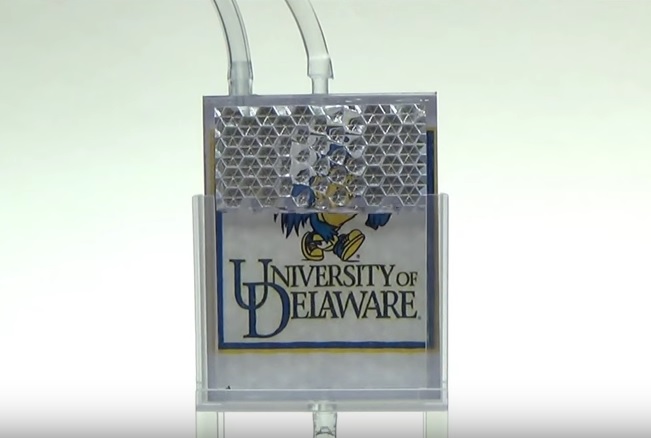July 25, 2016
Article by Diane Kukich
As an undergraduate in general engineering at James Madison University, Dan Wolfe had an internship conducting energy audits, an experience that opened his eyes to energy use and the potential to improve efficiency.
Now a doctoral student in electrical engineering at the University of Delaware, Wolfe and his adviser, associate professor Keith Goossen, have come up with a new low-cost approach to an energy-saving technology known generically as “smart glass.”
The transmittance of light through smart glass can be modulated, or controlled, when voltage, light or heat is applied, allowing the glass to switch from transparent to translucent, or vice versa. This transition can occur passively or actively depending upon the device technology.
But there’s a catch.
“Commercially available smart glass relies on exotic materials and intricate manufacturing techniques, translating into high cost for the end user,” says Wolfe. “Additional drawbacks include optical losses in thin films, continuous power draw, and poor transmittance modulation.”
Wolfe and Goossen have taken a different approach based on optofluidics, in which fluids can be used to manipulate the incident light. The use of different fluids enables the operating mode to be changed.
For example, carbon black nanofluids can be used for high light absorbance, while index-matching fluids — which match the refractive index of the mating materials and thereby optimize light transmission — can be used for high light transmittance. By forming a reflective panel with a thin reservoir into which an inexpensive fluid can be pumped, the panel can switch from almost perfectly reflective to almost perfectly transparent.
More advanced operating modes can be achieved by applying selective coatings with high or low emissivity, which is a measure of the efficiency with which a surface emits energy.
Experimental testing of the UD prototype has demonstrated a range from five percent transmittance, where most of the light is reflected, to 86 percent, where most of it is transmitted.
“We want to get the lower end down to zero, which our theoretical simulations suggest is possible, but we have to address some issues of surface roughness on the material to achieve this goal,” Wolfe says.
“In the meantime, we’re very satisfied with the simplicity of our design and the fact that it uses low-cost materials. In addition, it can easily be scaled for large area manufacturing.”
Applications for the technology include not only energy-efficient windows and privacy panels but also dynamic camouflage for the military as well as uses in art and architecture.















